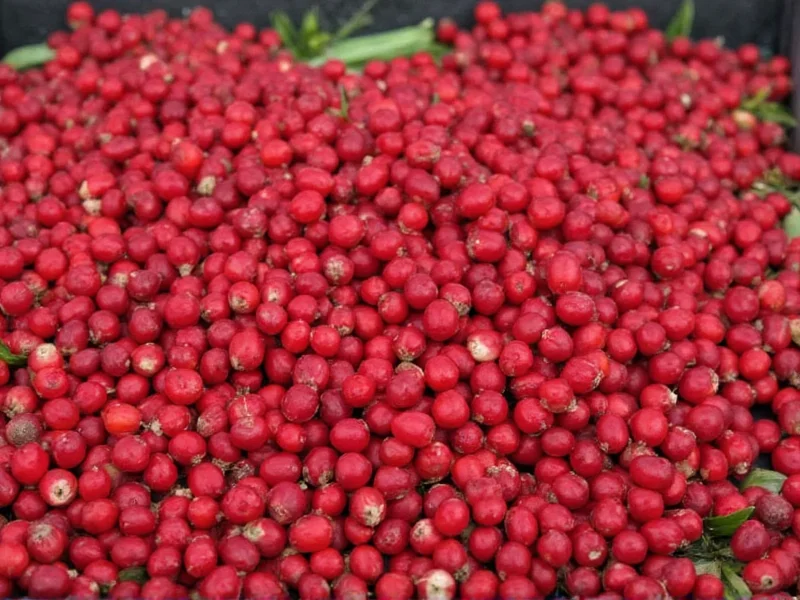Understanding Rose Peppercorns: More Than Just a Pretty Spice
Rose peppercorns bring both visual appeal and nuanced flavor to culinary creations. Despite their name, these "peppercorns" belong to the cashew family rather than the Piperaceae family of true peppers. The confusion stems from their similar appearance and peppery quality, though rose peppercorns deliver a distinctly different sensory experience.
Botanical Background and Origins
Native to South America, particularly Peru and Brazil, rose peppercorns come from two primary sources: the Peruvian pepper tree (Schinus molle) and the Brazilian pepper tree (Schinus terebinthifolius). Harvested when nearly ripe, the berries undergo a careful drying process that preserves their characteristic pink hue. Unlike black peppercorns that develop heat through piperine compounds, rose peppercorns contain different chemical compounds that create their signature mild, fruity profile.
Flavor Profile Analysis
Rose peppercorns offer a complex flavor journey:
| Characteristic | Description | Intensity Level |
|---|---|---|
| Primary Flavor | Berry-like sweetness with floral undertones | ★★★★☆ |
| Peppery Heat | Subtle warmth without sharp bite | ★☆☆☆☆ |
| Aftertaste | Citrusy finish with hints of resin | ★★★☆☆ |
| Texture | Softer than black peppercorns, less crunchy | ★★★☆☆ |
Culinary Applications and Pairing Suggestions
Chefs prize rose peppercorns for their ability to enhance dishes without dominating them. Their delicate nature makes them perfect for applications where traditional black pepper would overwhelm:
- Seafood preparations: Sprinkle over seared scallops or grilled salmon just before serving
- Fruit salads and desserts: Complement strawberries, peaches, and citrus-based dishes
- Creamy sauces: Add visual contrast and subtle flavor to béchamel or aioli
- Vinaigrettes: Create elegant pink-hued dressings for delicate greens
- Cheese boards: Pair particularly well with goat cheese and mild brie
When working with rose peppercorns, always add them at the end of cooking. Their volatile flavor compounds dissipate quickly with heat exposure. For best results, gently crush the berries using a mortar and pestle rather than a pepper mill to preserve their delicate structure.
Storage Recommendations for Maximum Freshness
Rose peppercorns lose their vibrant color and flavor more quickly than black peppercorns due to their higher moisture content. To maintain quality:
- Store in an airtight container away from light and heat
- Keep whole berries rather than pre-ground
- Use within 3-4 months for optimal flavor (compared to 1-2 years for black pepper)
- Consider refrigeration in humid climates to prevent moisture absorption
Rose Peppercorn vs. Other Varieties
Understanding the differences between peppercorn varieties helps home cooks make informed choices:
- Rose vs. Pink Peppercorns: These terms are often used interchangeably, though true pink peppercorns come specifically from the Schinus species. Some products labeled "pink peppercorns" may actually be dyed black peppercorns, so check sourcing information when purchasing authentic rose peppercorns.
- Rose vs. Black Peppercorns: Black peppercorns deliver stronger heat and earthiness, making them better for robust dishes like stews and grilled meats. Rose peppercorns provide visual appeal and subtlety for delicate preparations.
- Rose vs. Szechuan Peppercorns: Despite the name, Szechuan peppercorns create a numbing sensation rather than heat and belong to a completely different plant family.
Special Considerations for Use
While generally safe for culinary use, rose peppercorns contain compounds that may cause reactions in people with cashew or pistachio allergies, as they belong to the same plant family. Those with severe tree nut allergies should exercise caution when trying rose peppercorns for the first time.
Where to Source Quality Rose Peppercorns
When searching for authentic rose peppercorns, look for:
- Products specifying "Schinus molle" or "Peruvian pepper" on the label
- Berries with uniform pink color (avoid brown or faded specimens)
- Reputable spice merchants who provide origin information
- Freshness dates or harvest information
Consider purchasing small quantities initially to test quality, as rose peppercorns degrade faster than other pepper varieties. Specialty food stores, high-end grocers, and reputable online spice retailers typically offer the best quality.
Creating Balanced Flavor Combinations
Rose peppercorns shine when paired thoughtfully with complementary ingredients. Try these combinations:
- With citrus: Enhances the natural acidity in lemon or orange-based sauces
- With cream: Creates a sophisticated pink hue in pasta sauces or soups
- With mild herbs: Pairs beautifully with chervil, tarragon, or chives
- With sweet elements: Balances honey or maple syrup in glazes
For a simple yet impressive preparation, create a rose peppercorn oil by gently warming the berries in high-quality olive oil for 10-15 minutes, then straining. This infused oil elevates simple dishes like roasted vegetables or grilled fish with minimal effort.











 浙公网安备
33010002000092号
浙公网安备
33010002000092号 浙B2-20120091-4
浙B2-20120091-4